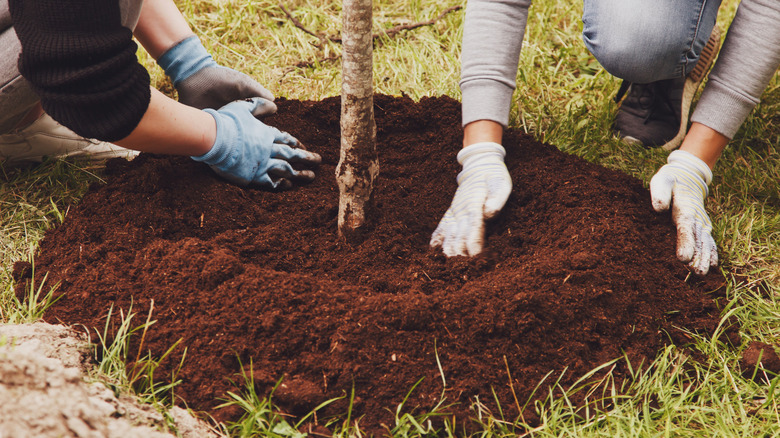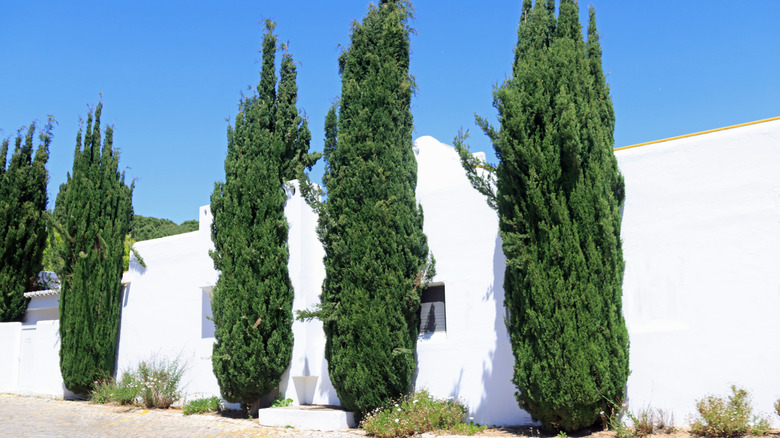The Stunning Tree Grown For Privacy That Can Become A Major Fire Hazard In Your Yard
If you are like many homeowners, you might wish to add some privacy trees around your property while also adding to your home's aesthetic appeal. Besides acting as beautiful landscaping, there are many good reasons to consider planting trees for privacy instead of installing a fence. While there are certainly many benefits of privacy trees, possible fire hazards are a major downside you need to consider before planting them. The Italian cypress tree (Cupressus sempervirens) is one example of a popular tree grown for home privacy that you should consider avoiding due to its potential fire risk on your property.
Indigenous to the Mediterranean region and parts of Asia, the Italian cypress tree is coveted for its ability to grow rapidly and provide a natural noise buffer and screen in place of fencing. However, this tree is a potential fire hazard because its wood retains a lot of heat, and it also produces an excessive amount of sap that can further fuel fires. Interestingly, this tree is practically designed to burn. It thrives in USDA Hardiness zones 7 through 10. The cones can open up in high-heat situations, such as fires, and then seeds will germinate in ashes once the fire is put out. Overall, experts do not recommend planting cypress trees in fire-prone areas. Some officials even recommend removing cypress trees growing within 100 feet of structures to help reduce the fire risk, while others recommend you do not plant them within 30 feet of your home.
Take precautions with Italian cypress
If you already have Italian cypress trees, or if you are still interested in planting them, there are some precautions you'll need to consider. First, it's important to make sure that the tree's limbs are not touching your home or other structures on your property. The ground underneath the trees themselves should also be clear, with lower limbs sheared off up to 10 feet in fire-prone areas. Another consideration is the age of Italian cypress trees. These trees tend to develop more drought tolerance as they grow, and dry trees make for good kindling. Make sure you are watering newly planted trees in your lawn often, monitor the health of your cypress trees, and remove dead twigs and branches as they appear.
If you're determined to grow Italian cypress trees, be wary of planting them near other trees that ignite quickly. In hot, dry, and windy climates, wildfires can easily leap from tree to tree. Aside from Italian cypress trees, other highly flammable plants and trees include eucalyptus, juniper, rosemary, and ornamental grasses. On the flipside, some examples of more fire-resistant trees include California sycamore, live oak, red maple, and water birch. These might be safer garden neighbors for your cypress. If you are unsure of about the best plants to have in your yard if you live in a fire-prone region, consider reaching out to a local arborist for advice.

